
 Neko Senpai
Neko Senpai About INCOTERMS 4groups
Video of This Article
 Kamome Senpai
Kamome Senpai This is 4:07 video.
This time, the topic is INCOTERMS.
I have already made the videos about INCOTERMS, But when I see the data of YouTube analysts, there are many access to the videos regarding INCOTERMS.
I thought there are many people who is interested in learning INCOTERMS.
INCOTERMS easiest way to understand
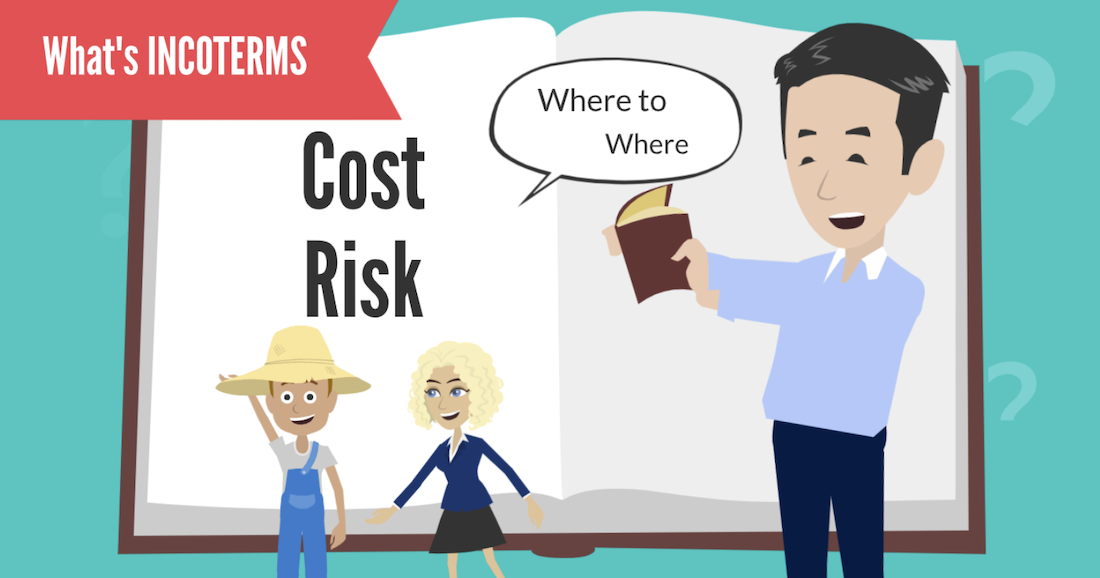
First, Let’s understand what INCOTERMS is. INCOTERMS is the agreement about Cost and Risk responsibility, between Shipper and Consignee.
It makes clear that Shipper and Consignee take cost and risk responsibility, from where to where.

Actually, there are 11 types of INCOTERMS. And it is difficult to understand if you try to remember them one by one.
This time, I will explain the easier way to understand INCOTERMS, for the beginner of logistics job.
4 Type/Group of INCOTERMS

The easier way to understand INCOTERMS is to understand the Group as category.
There are 4 groups.
Group E, Group F, Group C, and Group D.
First, it’s better to understand the feature of these 4 groups. And then, please try to understand each terms in each groups.
INCOTERMS E Group – Ex Works

First one is Group E. Actually, we call it group but it is just only Ex-works.

Let’s take a look at the feature of Ex-works. In Ex-Works, Consignee will take all cost and risk responsibility after loading the cargo at the Shipper’s factory. It’s quite simple, isn’t it?
INCOTERMS D Group – DAP/DPU/DDP
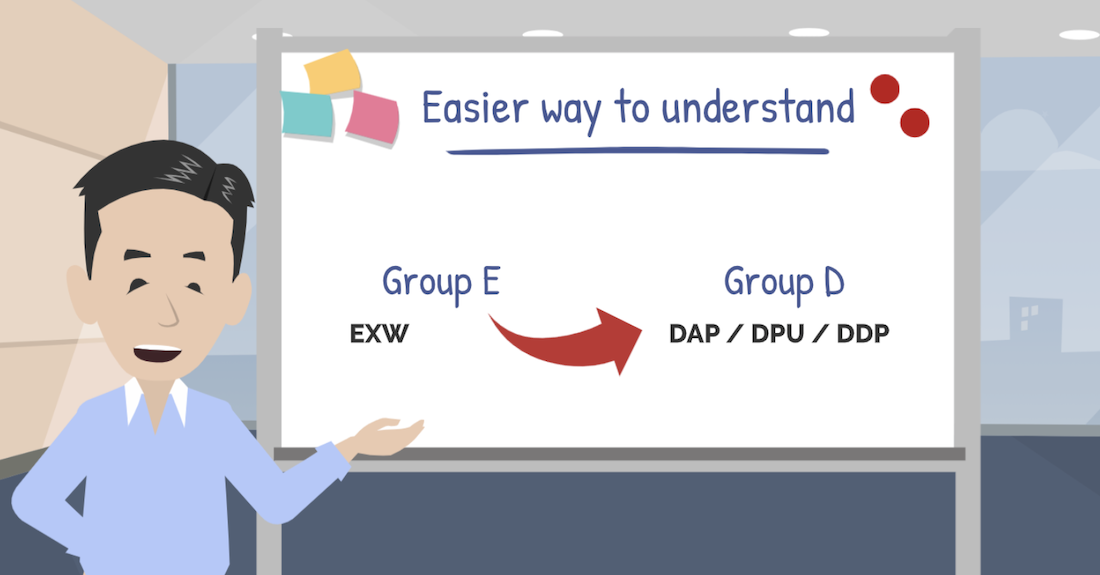
And then, the term that I will recommend to learn with Group E is, Group D.
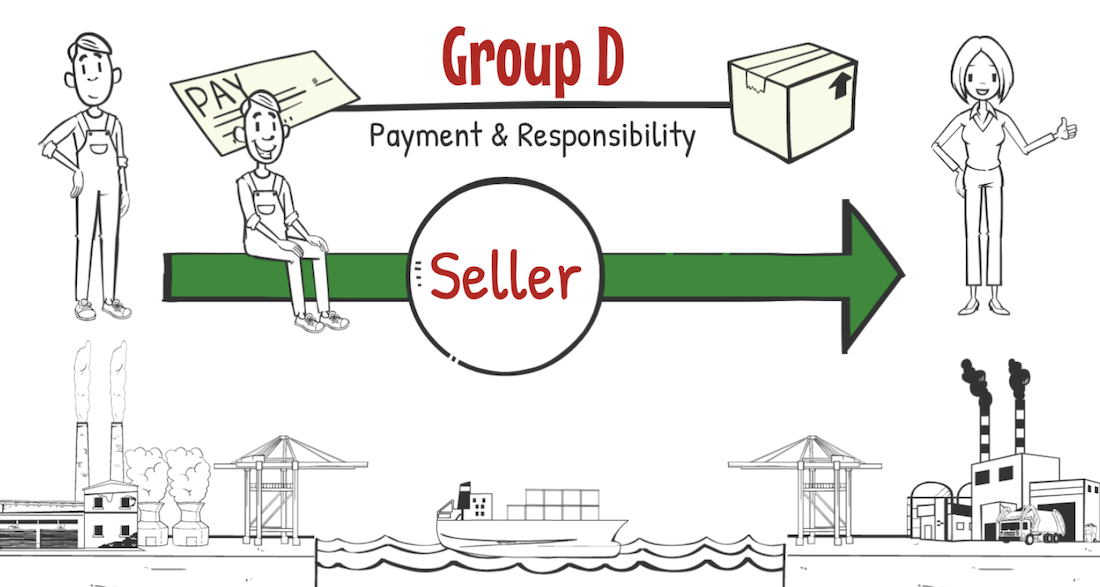
Group D has the opposite feature from Group E. In Group E, Consignee takes all cost and risk responsibility, But on the other hand, in Group D, Shipper takes all cost and risk responsibility.
This is the rough image of Group D,so in actual, there is the difference. Who pay Duty and Tax, and who take responsibility of unloading at Consignee, with DAP, DPU and DDP.
However, for the beginner of logistics, it’s better to understand roughly first.
INCOTERMS F Group – FOB/FCA/FAS
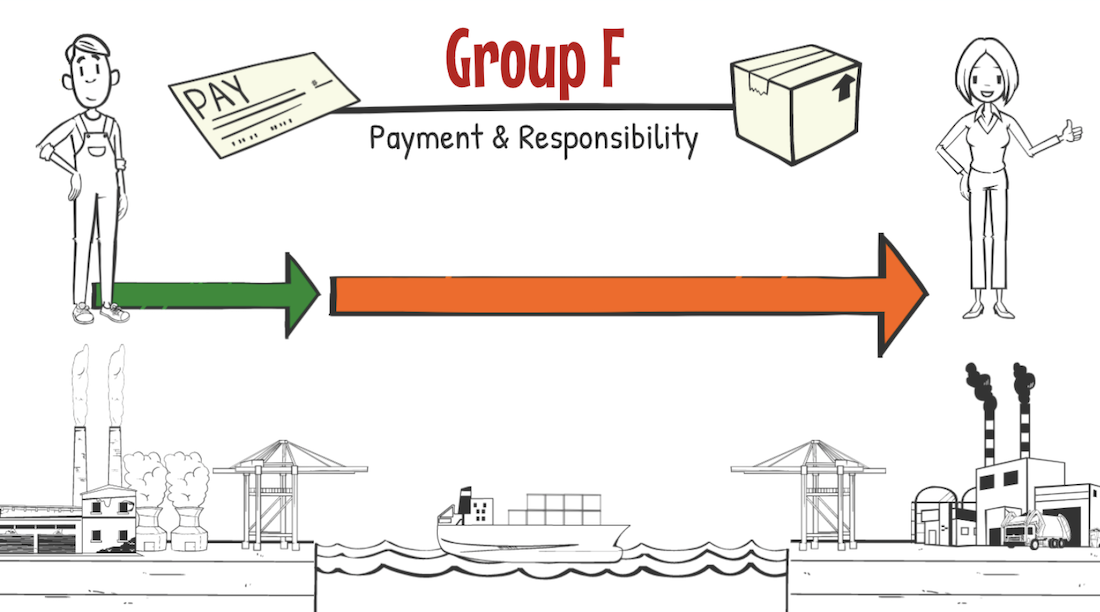
Next is Group F. In Group F, Shipper take cost and risk responsibility till port of exporting side. Then, the Consignee take cost and risk responsibility after that.
INCOTERMS C Group – CFR/CIF/CPT/CIP

It’s better to understand Group F and Group C together. In Group C, Shipper takes cost responsibility, till the port of importing side.And here is the complicating point.
In Group C, Shipper takes risk responsibility till port of exporting side, same as Group F. Please watch this part many times until you understand clearly.
Understand the set Group of “E & D” / “F & C”
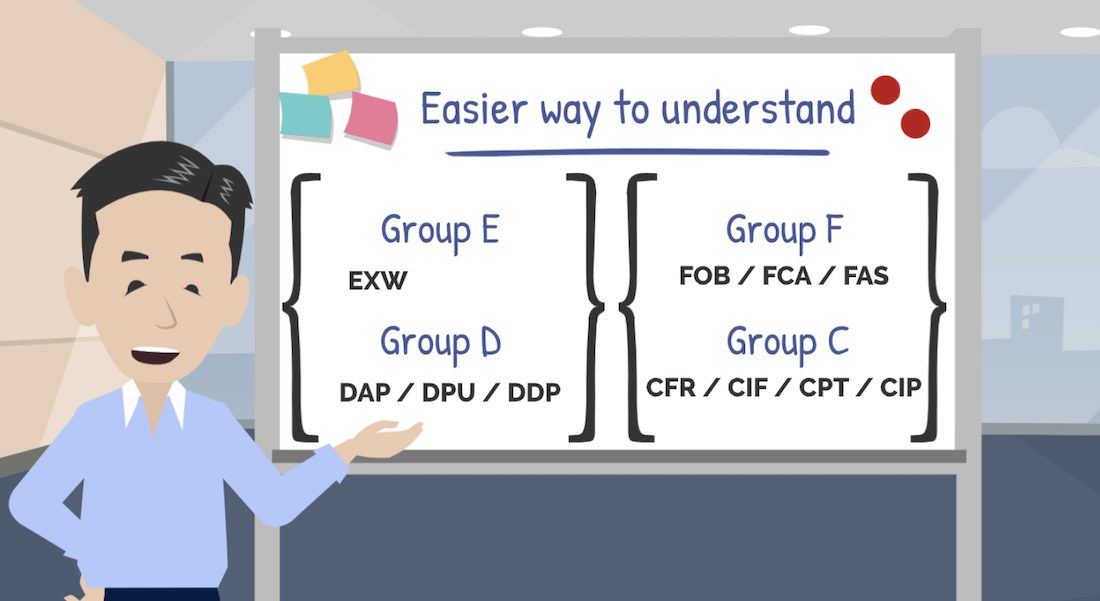
As I explained, you have to understand the overall about INCOTERMS first. Please do not remember each terms one by one.
First, please try to understand the feature of Group E, and Group D.
Also, please try to understand the feature of Group F ,and Group C together.
After you understand these groups as big categories, you will be able to understand each terms easily.
Summary
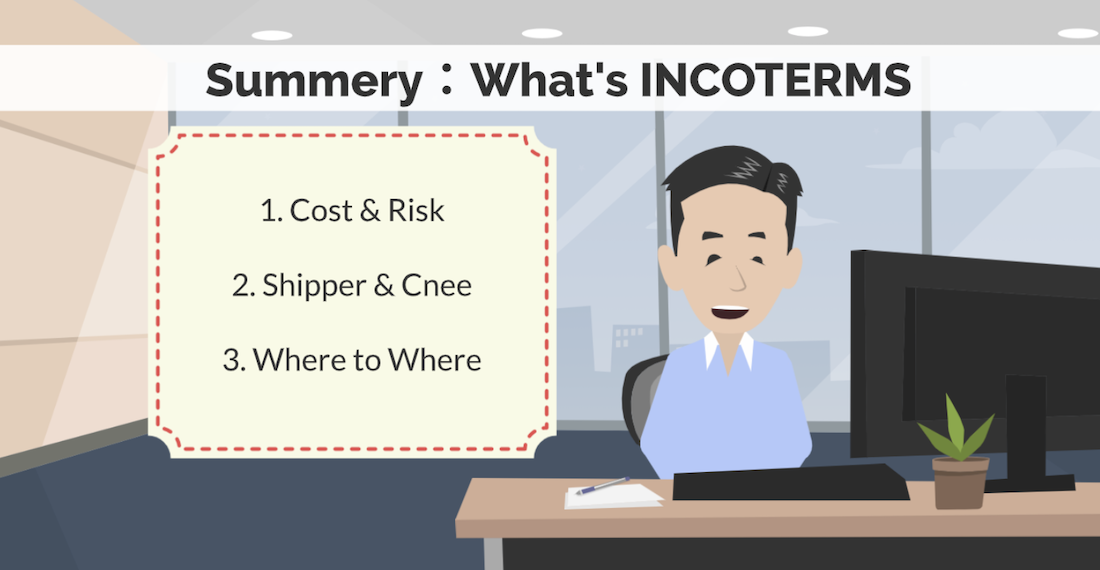
Let’s summarize today’s point.
INCOTERMS is the agreement to clear, Cost and Risk Responsibility between Shipper and Consignee. It also makes clear they takes responsibility, from where to where.

There are 4 groups in INCOTERMS, and you have to understand them first.
Group E, and its opposite feature of Group D.
Group F, and its opposite feature of Group C.

If you try to understand INCOTERMS with this way, it will be much clearer to know each terms. Well, how about the topics of this video?
I hope it will help for your logistics knowledge and your job.I will try to keep uploading the videos regarding of logistics.
If you kindly subscribe and press good. It will be a great motivation for me. Well, thank you for watching and see you at next video.
Contact to IINO san

★Contact to IINO san★
—————————————–
FaceBook Page
https://www.facebook.com/iinosaan
Linked In Message
https://www.linkedin.com/in/shinya-iino/
Twitter DM
https://twitter.com/iino_saan
—————————————–
 IINO
IINO I’m waiting for your contact!










